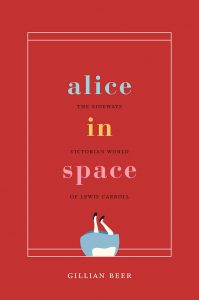Alice in Space (in Nature)

Gillian Beer wrote “History: Untangling Alice” for Nature, synthesizing some of the research from her book Alice In Space, which examines the Alice books by Lewis Carroll via the immediate context in which they landed: the 1860s, a decade rife with new languages and concepts drawn from scientific, linguistic, and educational developments. (Note: this book is so great!)
In Beer’s words:
When I started writing it more than a decade ago, I wondered how far intuition and familiarity with Victorian intellectual culture should take me in asserting Carroll’s participation in the ideas thronging around him. I had to rely on the Alice books for evidence of allusion and parodies. Now I have a fuller picture of how Carroll used fantasy to pursue thoughts — on radical mathematics and Boolean logic, for example — that he constrained in his professional life as a devout Euclidean.
The Victorian culture within which the Alice books were written is largely invisible to us now. It was a period of immense intellectual upheaval in fields from mathematics to language theory, evolution and education. Carroll slips these ideas into the layers of his jokes, sliding infant puns above learned references. He had a teasing openness to the ideas being pursued by his contemporaries in science, such as Thomas Henry Huxley, Charles Darwin, by logician John Stuart Mill and by lawmakers, photographers, museum-makers and novelists including George Eliot and Emily Brontë.
The Alice books move like quicksilver — sleek globules of sense splitting and straying through the maze. This was a period when possible worlds, probability and ideas of space as curved or flat were being eagerly discussed. What mathematician James Joseph Sylvester described as the “rumpling of the page” of 3D space fascinated, among others, physicist Hermann von Helmholtz, who observed that Euclid’s geometry holds good for the plane, but not for “surfaces flexible without change of dimensions.” Thus Alice goes through the looking-glass.
To read the Nature piece in full, click here.
To read more about Alice in Space, click here.